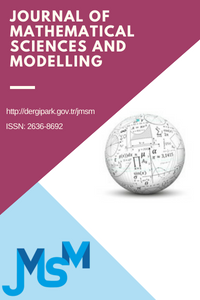Availability analysis of a consecutive three stages deteriorating standby system considering maintenance and replacement
Availability analysis of a consecutive three stages deteriorating standby system considering maintenance and replacement
availability, deterioration, maintenance,
___
- [1] Bérenguer C.(2008). On the mathematical condition-based maintenance modelling for continuously deteriorating systems, International Journal of Materials and Structural Reliability, 6, 133-151.
- [2] Frangopol, D.M.; Kallen, M.J. and Van Noortwijk, J.M. (2004). Probabilistic models for life-cycle performance of deteriorating structures: Review and future directions. Prog. Struct. Eng. Mater., 6, 197–212.
- [3] Lam,Y and Zhang, Y. L. (2003). A geometric-process maintenance model for a deteriorating system under a random environment, IEEE Trans. Reliability. 52(1), 83-89.
- [4] Liu, D., Xu, G and Mastorakis, N. E. (2011).Reliability analysis of a deteriorating system with delayed vacation of repairman, WSEAS Transactions on Systems, 10(12),
- [5] Nicolai, R.P. Dekker, R. and Van Noortwijk, J.M. (2007). A comparison of models for measurable deterioration: An application to coatings on steel structures. Reliab. Eng. Syst. Saf. , 92, 1635–1650.
- [6] Pandey, M.D.; Yuan, X.X.; van Noortwijk, J.M. The influence of temporal uncertainty ofdeterioration on life-cycle management of structures. Struct. Infrastruct. Eng. 2009, 5, 145–156.
- [7]Rani, T.C and Sukumari, C. (2014). Optimum replacement time for a deteriorating system, International Journal of Scientific Engineering and Research, 2(1), 32-33.
- [8] Tuan K. Huynh, Anne Barros, Christophe Bérenguer. (2013).A Reliability-based Opportunistic Predictive Maintenance Model for k-out-of-n Deteriorating Systems, Chemical Engineering Transactions, 33, 493-498.
- [9] Vinayak, R and Dharmaraja. S (2012). Semi-Markov Modeling Approach for Deteriorating Systems with Preventive Maintenance, International Journal of Performability Engineering Vol. 8, No. 5, pp. 515- 526.
- [10] Wang, K,-H and Kuo, C,-C. (2000). Cost and probabilistic analysis of series systems with mixed standby components, Applied Mathematical Modelling, 24: 957-967.
- [11] Wang,K., Hsieh, C and Liou, C. (2006). Cost benefit analysis of series systems with cold standby components and a repairable service station. Journal of quality technology and quantitative management, 3(1): 77-92.
- [12] Xiao, T.C., Li, Y, -F., Wang, Z., Peng, W and Huang, H, -Z. (2013). Bayesian reliability estimation for deteriorating systems with limited samples Using the Maximum Entropy Approach, Entropy, 15, 5492-5509; doi:10.3390/e15125492.
- [13] Yuan, W., Z. and Xu, G. Q. (2012). Modelling of a deteriorating system with repair satisfying general distribution, Applied Mathematics and Computation 218, 6340–6350
- [14] Yuan, L and Xu, J. (2011).A deteriorating system with its repairman having multiple vacations, Applied Mathematics and Computation. 217(10), 4980-4989.
- [15] Yusuf, I., Suleiman, K., Bala, S.I. and Ali, U.A. (2012). Modelling the reliability and availability characteristics of a system with three stages of deterioration, International Journal of Science and Technology, 1(7) , 329-337.
- [16] Zhang, Y.L. and Wang, G. J. (2007). A deteriorating cold standby repairable system with priority in use, European Journal of Operational Research, Vol.183, 1, pp.278–295.
- ISSN: 2636-8692
- Yayın Aralığı: Yılda 3 Sayı
- Başlangıç: 2018
- Yayıncı: Mahmut AKYİĞİT
Boolean hypercubes and the structure of vector spaces
İbrahim YUSUF, Ramatu İdris GATAWA, Kabiru SULEİMAN
Evolution equations in Fréchet spaces
Said ABBAS, Amaria ARARA, Mouffak BENCHOHRA, Fatima MESRİ
Diagnosis of axial displacement in transformer windings using finite element analysis
Kamran DAWOOD, Mehmet AYTAC ÇINAR, Bora ALBOYACI
Bouteraa NOUREDDİNE, Slimane BENAİCHA
A new class activation functions with application in the theory of impulse technics
